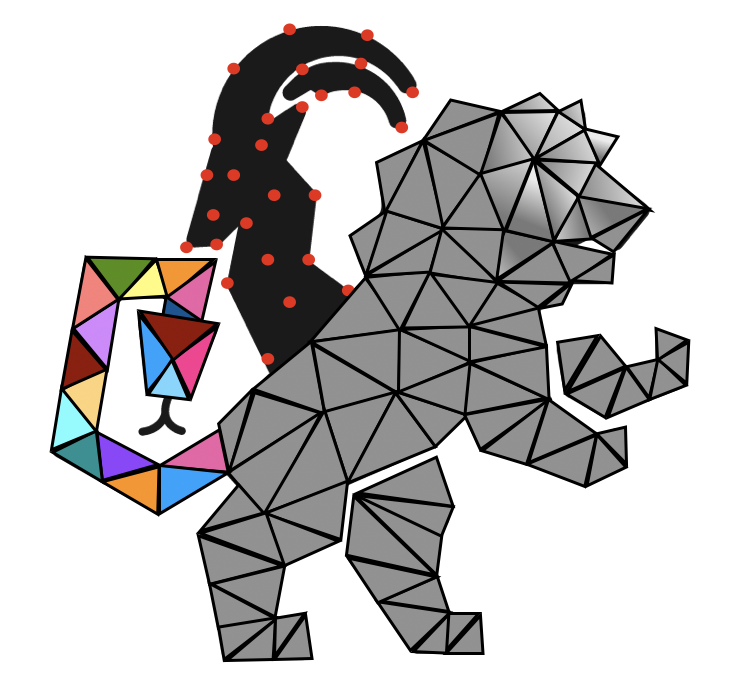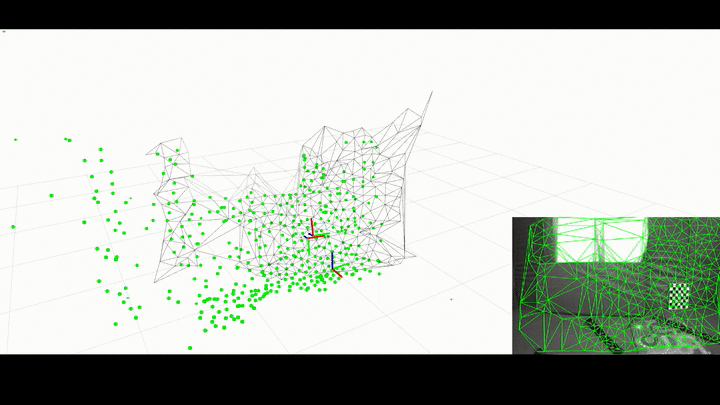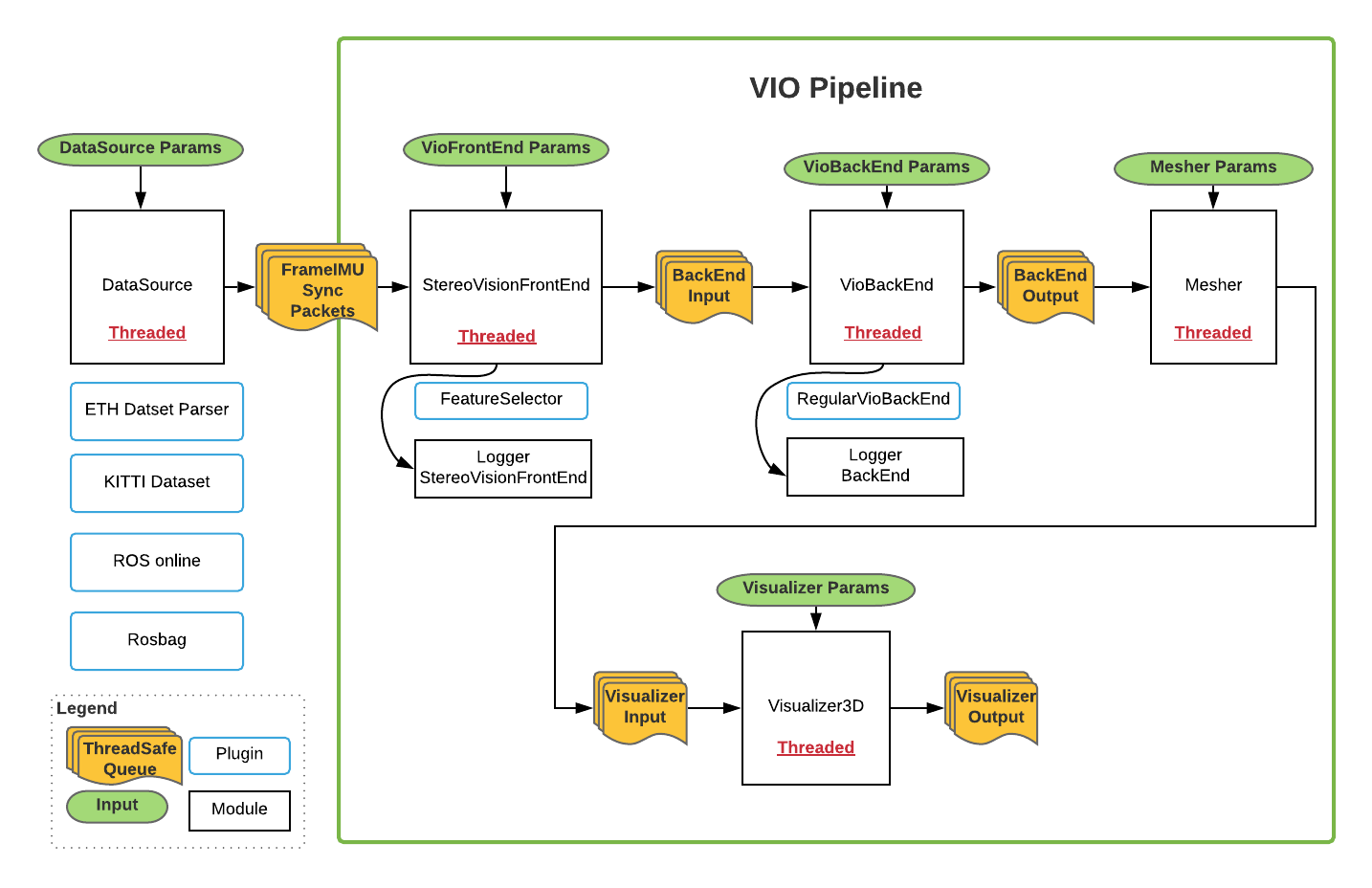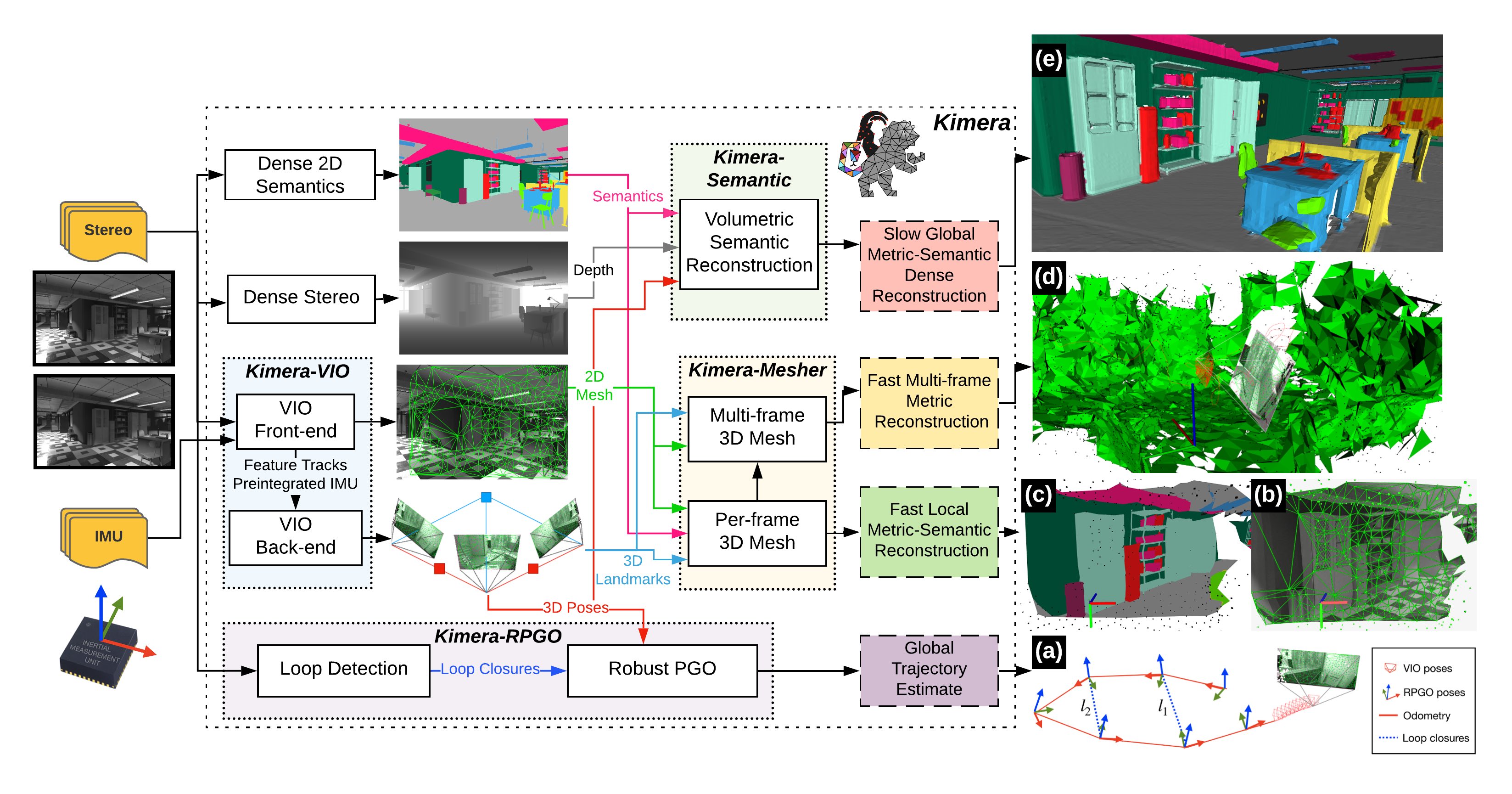For evaluation plots, check our jenkins server.
Authors: Antoni Rosinol, Yun Chang, Marcus Abate, Sandro Berchier, Luca Carlone
Kimera-VIO is a Visual Inertial Odometry pipeline for accurate State Estimation from Stereo + IMU data. (Mono-only capabilities soon to be released).
We kindly ask to cite our paper if you find this library useful:
- A. Rosinol, M. Abate, Y. Chang, L. Carlone. Kimera: an Open-Source Library for Real-Time Metric-Semantic Localization and Mapping. arXiv preprint arXiv:1910.02490.
@misc{Rosinol19arxiv-Kimera,
title = {Kimera: an Open-Source Library for Real-Time Metric-Semantic Localization and Mapping},
author = {Rosinol, Antoni and Abate, Marcus and Chang, Yun and Carlone, Luca},
year = {2019},
eprint = {1910.02490},
archiveprefix = {arXiv},
primaryclass = {cs.RO},
url = {https://github.com/MIT-SPARK/Kimera},
pdf = {https://arxiv.org/pdf/1910.02490.pdf}
}Backend optimization is based on:
-
C. Forster, L. Carlone, F. Dellaert, and D. Scaramuzza. On-Manifold Preintegration Theory for Fast and Accurate Visual-Inertial Navigation. IEEE Trans. Robotics, 33(1):1-21, 2016.
-
L. Carlone, Z. Kira, C. Beall, V. Indelman, and F. Dellaert. Eliminating Conditionally Independent Sets in Factor Graphs: A Unifying Perspective based on Smart Factors. IEEE Intl. Conf. on Robotics and Automation (ICRA), 2014.
Alternatively, the Regular VIO backend, using structural regularities, is described in this paper:
- A. Rosinol, T. Sattler, M. Pollefeys, and L. Carlone. Incremental Visual-Inertial 3D Mesh Generation with Structural Regularities. IEEE Int. Conf. on Robotics and Automation (ICRA), 2019.
Tested on Mac, Ubuntu 14.04 & 16.04 & 18.04.
Note: if you want to avoid building all dependencies yourself, we provide a docker image that will install them for you. Check installation instructions in docs/kimeravio_installation.md.
Note 2: if you use ROS, then Kimera-VIO-ROS can install all dependencies and Kimera inside a catkin workspace.
Find how to install Kimera-VIO and its dependencies here: Installation instructions.
The LoopClosureDetector (and PGO) module is disabled by default. If you wish to run the pipeline with loop-closure detection enabled, set the use_lcd flag to true. For the example script, this is done by passing -lcd at commandline like so:
./scripts/stereoVIOEUROC.bash -lcdTo log output, set the log_output flag to true. For the script, this is done with the -log commandline argument. By default, log files will be saved in output_logs.
To run the pipeline in sequential mode (one thread only), set parallel_runto false. This can be done in the example script with the -s argument at commandline.
i. Euroc Dataset
- Download one of Euroc's datasets, for example V1_01_easy.zip.
Datasets MH_04 and V2_03 have different number of left/right frames. We suggest using instead our version of Euroc here.
- Unzip the dataset to your preferred directory, for example, in
~/Euroc/V1_01_easy:
mkdir -p ~/Euroc/V1_01_easy
unzip -o ~/Downloads/V1_01_easy.zip -d ~/Euroc/V1_01_easyAdd %YAML:1.0 at the top of each .yaml file inside Euroc.
You can do this manually or run the yamelize.bash script by indicating where the dataset is (it is assumed below to be in ~/path/to/euroc):
You don't need to yamelize the dataset if you download our version here
cd Kimera-VIO
bash ./scripts/euroc/yamelize.bash -p ~/path/to/eurocUsing a bash script bundling all command-line options and gflags:
cd Kimera-VIO
bash ./scripts/stereoVIOEuroc.bash -p "PATH_TO_DATASET/V1_01_easy"Alternatively, one may directly use the executable in the build folder:
./build/stereoVIOEuroc. Nevertheless, check the script./scripts/stereoVIOEuroc.bashto understand what parameters are expected, or check the parameters section below.
ii. Using ROS wrapper
We provide a ROS wrapper of Kimera-VIO that you can find at: https://github.com/MIT-SPARK/Kimera-VIO-ROS.
This library can be cloned into a catkin workspace and built alongside the ROS wrapper.
For more information on tools for debugging and evaluating the pipeline, see our documentation
Kimera-VIO accepts two independent sources of parameters:
- YAML files: contains parameters for Backend and Frontend.
- gflags contains parameters for all the rest.
To get help on what each gflag parameter does, just run the executable with the --help flag: ./build/stereoVIOEuroc --help. You should get a list of gflags similar to the ones here.
- Optionally, you can try the VIO using structural regularities, as in our ICRA 2019 paper, by specifying the option
-r:./stereoVIOEuroc.bash -p "PATH_TO_DATASET/V1_01_easy" -r
OpenCV's 3D visualization also has some shortcuts for interaction: check tips for usage
We strongly encourage you to submit issues, feedback and potential improvements. We follow the branch, open PR, review, and merge workflow.
To contribute to this repo, ensure your commits pass the linter pre-commit checks.
To enable these checks you will need to install linter.
We also provide a .clang-format file with the style rules that the repo uses, so that you can use clang-format to reformat your code.
Also, check tips for development and our developer guide.
If you have problems building or running the pipeline and/or issues with dependencies, you might find useful information in our FAQ or in the issue tracker.
Kimera-VIO is open source under the BSD license, see the LICENSE.BSD file.





